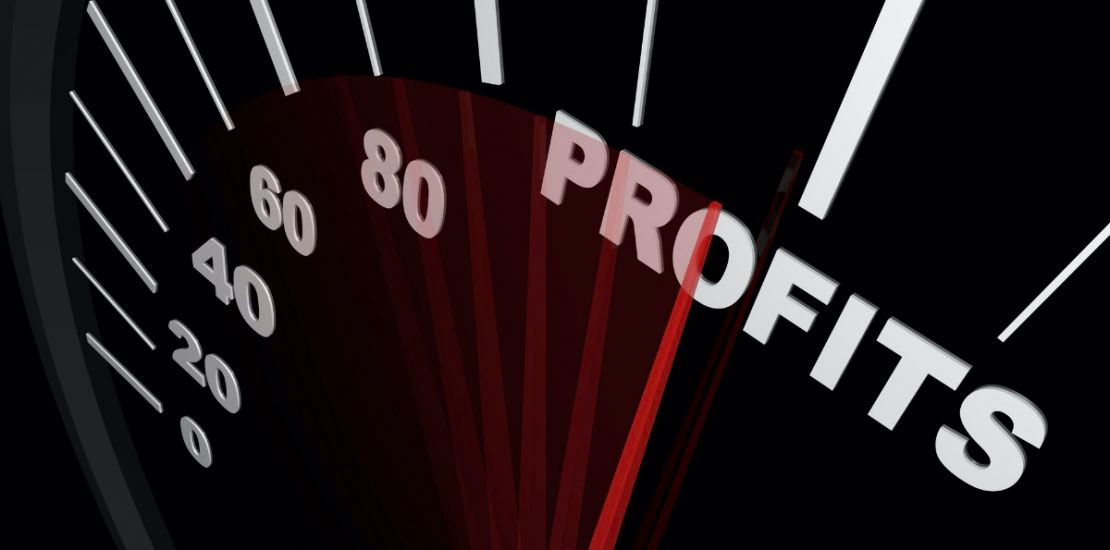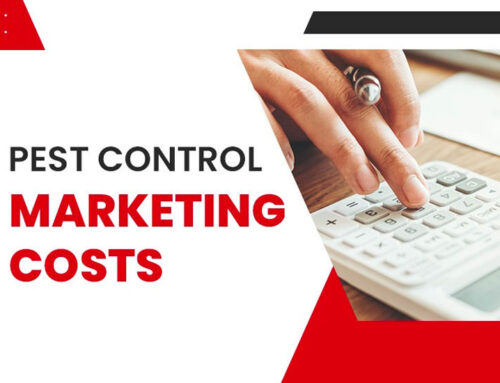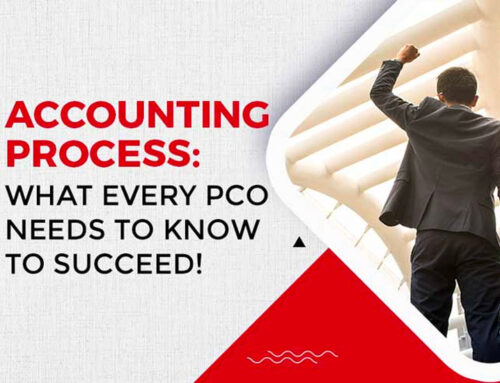At the 2020 CO2@Home conference, hosted in December by Coalmarch, I presented a CFO Workshop, where I covered the four key performance indicators (KPIs) that are most important for determining profitability and wealth creation in a pest control company.
Think of profitability as what you make each month, while wealth creation is the value you’re building in your company. Although you may not be looking to sell your company anytime soon, how do you know that you’re winning at the game of business? It’s by increasing the value of your business.
The four KPIs vital to profitability and wealth creation are:
1. Gross Margin
2. Annual Cashflow to Ownership
3. Recurring to Non-Recurring Revenue
4. Annual Revenue Growth
Let’s look at each one of those areas and some actions you can take to improve them.
Gross Margin in Pest Control
I like to look at business as a manufacturing process. I know you’re not in the manufacturing world, you’re in the service industry, but you can say you manufacture hours of technician time. The big question is, “Are those hours profitable?”
The formulas you need to determine gross margin are:
• Revenue – Direct Costs = Gross Profit
• Gross Profit / Revenue = Gross Margin
For example, let’s look at a pest control company that sells its services at $100 per hour. If rent, utilities and all other fixed costs are $9,000, and you use a $45 gross profit per hour with direct costs of $55 per hour (45 percent gross margin), then your breakeven point is 200 hours of service ($9,000/$45) at a $100 per hour selling price.
(By the way, 45 percent is not a good gross margin in pest control. The sweet spot is 50 to 55 percent.)
In other words, after 200 hours of service you will start making a profit of $45 per hour. The gross profit contributes to paying the fixed costs. Once the fixed costs are paid, the gross profit contributes to bottom line profit. This is the reason some accountants call gross profit the contribution margin.
If you increase your price per hour, your gross margins expand, thereby shrinking your breakeven point. Using the previous example, let’s raise the selling price per hour 10 percent to $110 per hour. Your direct costs remain $55 per hour and your gross margin increases to $55 per hour (50 percent), so your breakeven is now 163.6 hours ($9,000/$55).
Remember, the higher the selling price, the lower the breakeven point, the more valuable the business.
Take action: Consider raising prices to decrease your breakeven point, increasing your annual cashflow to the owner. How high do you need to raise prices? I recommend increasing them so you’re in the sweet spot of 50-55 percent gross margin. (By the way, if you don’t know your gross margin, set up your chart of accounts so you can easily measure it. That’s the first step.)
Annual Cashflow to Ownership
Business is an investment. Yes, there’s an operating component that requires you to go to work every day and take care of customers, but your business is also an asset that’s an investment, which hopefully will increase in value and give you a good return.
Compare it to buying a piece of real estate. You’ll get rental income from it and it will appreciate. Ideally, you will make a good ROI over time and a good profit on the increase in value when you sell it.
How do we measure your return on your investment? Start with your net income, or earnings before interest, taxes, depreciation and amortization (EBITDA) plus addbacks, such as owner excess wages, travel and entertainment, certain administrative costs and other owner items. Essentially, your ROI is how much money you take out of the company.
How do you value that investment? Let’s say you have an investment that yields $50,000 per year. If you want to earn 5 percent on your money, that investment would be worth $1 million. Likewise, let’s say you have an investment that yields $50,000 per year and you want to earn 10 percent on your money. That investment is only worth $500,000. So your value depends on what your required ROI is.
Cost of capital is also important in determining your ROI. Let’s say an investor is looking to buy your company and the bank says the investor can borrow money at 5 percent. The entire $50,000 pays the interest at a $1 million purchase price. What about some return to you, as the investor for your risk and effort operating the company? Let’s say you’re willing to accept 5 percent for your efforts plus 5 percent for the bank, requiring a ROI of 10 percent. This makes the company worth $500,000 or 10 times free cash flow, which translates into 1 times revenue.
We know companies are paying more than 1 times revenue, and we also know companies are buying revenue streams and require higher ROI. Best-in-class companies return about 20 percent to owner.
If we were at 20 percent to owner and 10 times on cash flow the multiple would be 2 times revenue.
It drives me crazy when I hear people say their company is worth 1.5 times revenue or something to that effect. It’s really not. It’s worth a multiple of the free cash flow. Two companies with $1 million in revenue are not necessarily worth the same amount of money.
Market interest rates affect firm value, and they’re low right now. It’s why the stock market is high. It’s why real estate values are high. It’s why the price of other alternative assets are high.
What happens if interest rates rise? Valuations fall. In the example above, if the bank wanted 7 percent rather than 5 percent, the required cost of capital would be higher.
We’re at an important point in history where interest rates are next to nothing and asset values are high. It will be interesting to see what happens over the next few years.
Take action: Best-in-class pest management and lawn care companies drop 20 percent to ownership or better. If you’re not there, I recommend moving in that direction. We have clients who do more or less than 20 percent, but that’s the target percentage.
Recurring to Non-Recurring Revenue
The ratio of recurring to non-recurring revenue in a pest control business is important for a handful of reasons, including predictability, scalability, expense management, visibility and durability. Let’s look closer at each one.
Predictability
Businesses operating on a subscription-based model rarely miss their monthly forecasts because their financial forecast models are much more accurate than those relying on one-off work. Instead of starting from zero, a company begins with a base to grow upon at the beginning of each period.
Company owners and potential buyers are rarely surprised by major fluctuations in business results, and the predictability of monthly subscription comes with a range of downstream benefits, including easy budgeting, a path to growth and higher business valuations.
Scalability
Since they produce predictable cash flow to invest in business growth, recurring revenue model businesses are easier to scale.
With the deep data insights provided by a subscription model, companies can understand their cash flow and effectively invest in business growth with minimal risk.
When a service has reached standardized quality and subscription values, you can be sure that you will minimize churn and maximize recurring revenue from existing, satisfied customers.
Expense Management
With such predictability regarding their revenue, recurring-revenue-based companies can manage their expenses more accurately.
The challenge of lumpy revenue models is that you can’t know how well you did until the quarter or the year is over. With recurring revenue, it is easier to increase or reduce expenses to match revenue.
Visibility
Unexpected changes in business won’t completely blindside you if you know where you start each month and where you can expect to end up.
Thanks to your recurring revenue model, you can make business decisions a year in advance. If unexpected changes occur, there will be plenty of warning and time to adjust.
Durability
With monthly recurring revenue, you never start a month with zero. Thanks to accurate forecasting and in-depth insights, you can use the collected information to reduce risk when making important decisions regarding taking on new business or reducing churn rates.
Take action: Every business should have recurring revenue woven into its core. If you’re not thinking along these lines, you’re putting the future of your business in jeopardy and you’re not building value in your business.
(Related: Case Study: The Power of Recurring Revenue When It’s Time to Sell)
Annual Revenue Growth
Annual revenue growth is vital to a pest control company’s success for several reasons, including profitability, valuation, customers and employees.
Profitability
Simply put, the more you grow revenue the more likely you are to grow profits. If you achieve higher levels of revenue and manage costs so they rise at a lower rate, then you maximize profits. By driving revenue higher, you improve the profitability of your business. Revenue growth becomes the engine for investing, acquiring (e.g., talent, new capabilities, additional products, other companies), expanding and attaining even more growth and profit in your business.
Valuation
The valuation of your company becomes a currency to enable strategic decision making in your business. The valuation that others assign to your business determines your ability and flexibility to make important transactional decisions, such as securing investment funding, selling your business or securing a bank loan.
The rate of revenue growth is also important because trajectory reflects the future strength of your business. An accelerating rate of revenue growth is viewed as a positive indicator for improving trends and, therefore, the value of your business. Significant rates of growth are important elements in establishing a valuation for your business.
Customers
In an increasingly customer-centric business climate, investing in and strengthening your customer engagement capabilities must be a priority.
Growing revenue in your business is a testament to your effectiveness in delivering value to customers. Revenue growth is a key metric of your success in satisfying customers. They buy because they expect to receive value from what you provide. When they continue to buy, they are affirming that you are delivering to them a solution that they need.
Employees
Growing your revenue is important to workforce success. When your company is growing, employee satisfaction is also likely to grow.
Employees expect to benefit from a business that is growing in terms of improved wages, career path opportunities and management performance bonuses. Knowing that their company is succeeding, demonstrated by growth in revenue, is evidence to your employees that their work is impactful. They are contributing to its success.
Not to mention, growing revenues drives more profits that enable investment in your workforce. Attaining revenue growth enables you to keep the best workers, it drives their motivation to excel at their work and it creates an atmosphere of success that everyone wants to be part of and contribute to.
Take action: Benchmark your growth against other pest control companies in the industry with our industry Cost Study report or by contacting us to learn about becoming a PCO Bookkeepers client and receiving monthly dashboard and One-Minute Manager reports.
Photo: iqoncept/depositphotos.com




